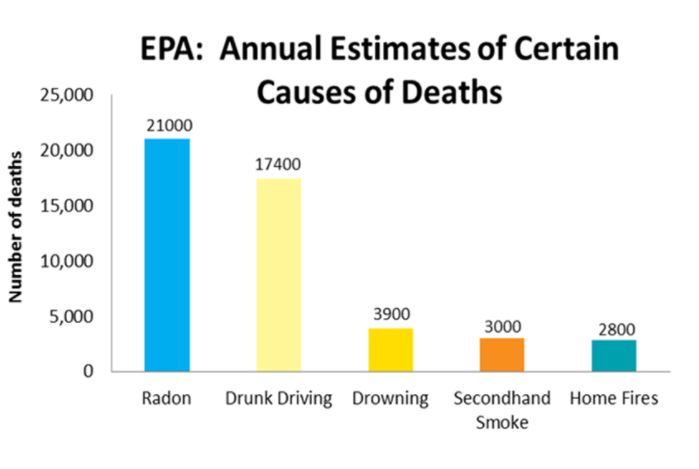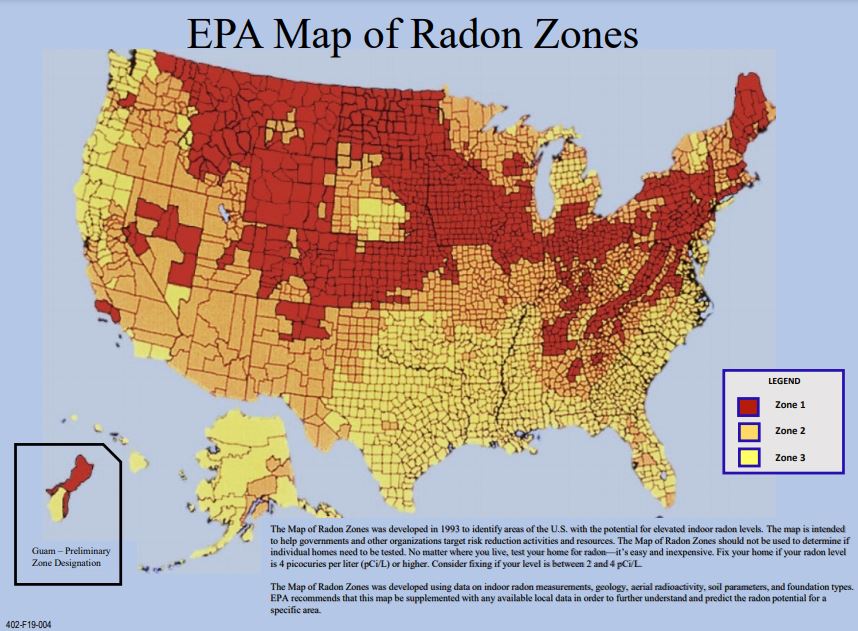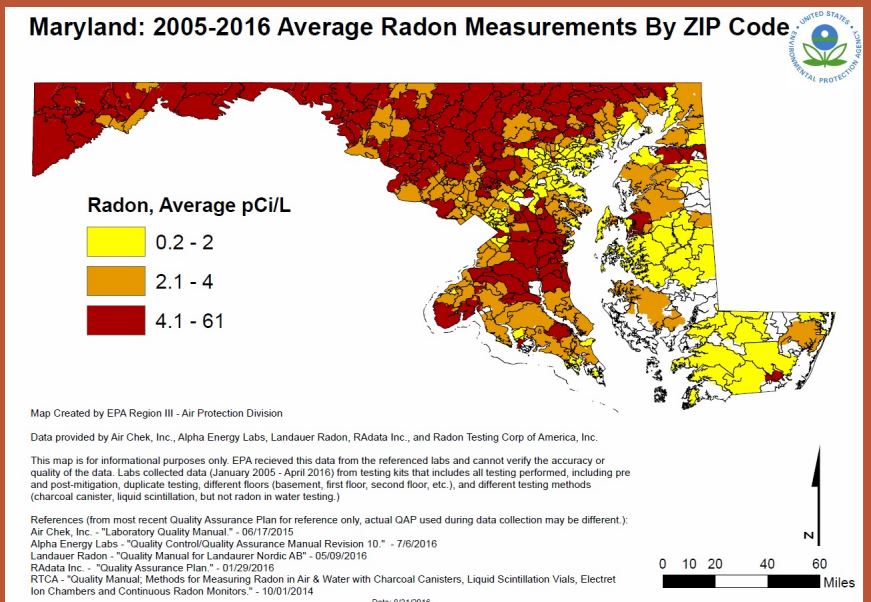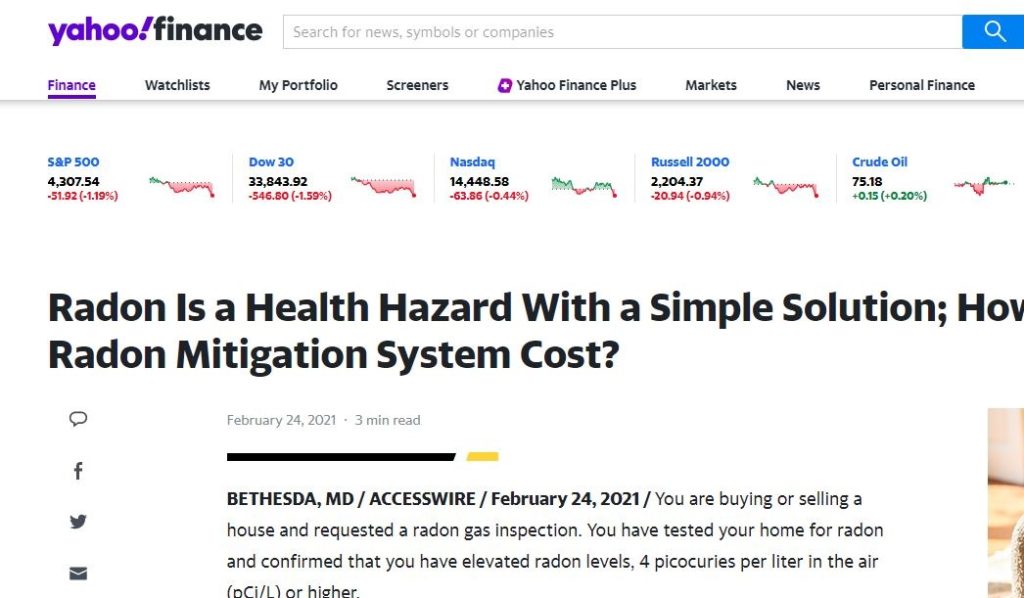High Radon Levels in House
Radon accumulates in buildings, sometimes reaching high levels in house. Radon formed by decay of uranium that is naturally found in soil, rock under house foundation. As radon decays, it produces harmful particles of alpha-radiation( poloniu-218, and polonium-214) known to cause lung cancer. Radon gas is measured in are pCi/L. The US Environmental Protection agency recommended action level for radon is 4pCi/L.
Uranium and radium are present in the ground. Therefore, radon can be found in well water, and soil gas, and building materials that come from the ground. it might be difficult to avoid materials that emanate radon gas. Once radon indoors through cracks in the foundation and plumbing and electrical penetrations it decay into radioactive products that are inhaled and can lead to lung cancer.
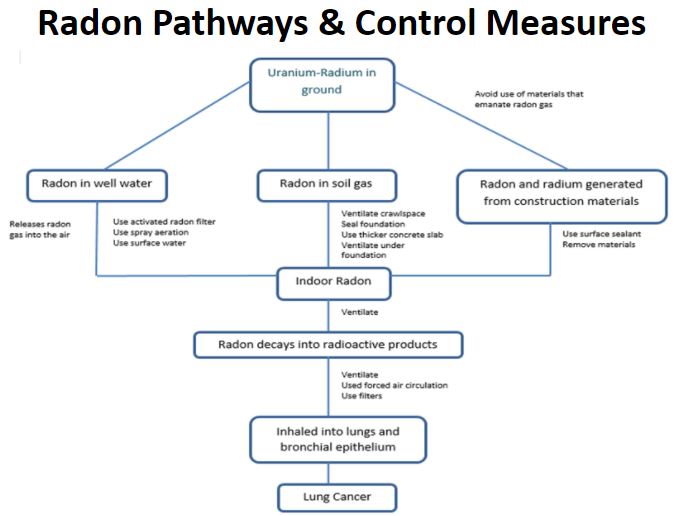
There is a relationship between decay product concentration and radon gas concentration.
Once radon enters a home, it begins to form decay products. Time is needed for radon and radon decay products level to stabilize. Over a period of about 12 hours, radon decay products reach a balanced concentration. This concentration is a balance of the amount of radon decay products that are produced and those lost through place out and ventilation. The balance is referred to as the dynamic equilibrium ration.
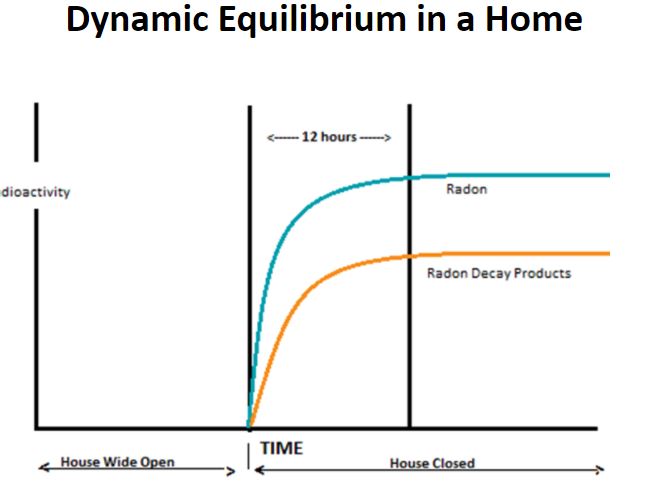
Achieved in 12 hours
Radon and RDP levels stabilize
Achieved with closed building for at least 12 hours
Equilibrium Ratio(ER) is a relationship between radon and decay products(RDP) concentration and gas concentration. RDPs form directly in air and then adhere to dust particles and lung tissue. RDPs deliver alpha energy directly to lung.
In real situation, an ER of 1 does not occur in house, because of certain factors. In addition it take time for radon entering a home to produce decay products. Furthermore, radon decay products are charged and attache to the walls and other solid surfaces, reducing the ER.

Factors Affecting ER
- Air circulation
- Electronic air filters
- Suspended dust, smoke
- recent ventilation
As a results, the ER will always be less then one as the example above shows. The graphic above shows that ER can increase by humidity, cigarette smoke and dust. On the other , ventilation, using ceiling fans or a dehumidifiers can reduce the ER.

Radon Health Effects
1.Once radon is inhaled, radon decay products become trapped inside the lungs
2. RDPs irradiate the cells of the mucous membrane, bronchi, and other pulmonary tissues
3.RDPs may damage DNA
The energy released by alpha particles can cause permanent damage to DNA molecules, either physically or chemically. Sometimes this damage can prevent further cell division, and eventually cell will die. Cell also have capability to repair some of the damage. In very small portion of the irradiated actively dividing cells, the damaged DNA will be replicated incorrectly which may induce lung cancer.
In direct radiation damage, the radiation hits the cell nucleus or other important cell structure and can cause cell death or potentially induce cancer. In indirect type of damage, the radiation deposits its energy into water molecules inside the cell, creating free radicals like hydroxyls , ultimately damaging the DNA. The latency period for this damage to DNA can be up to 25 years before the symptoms may appear.
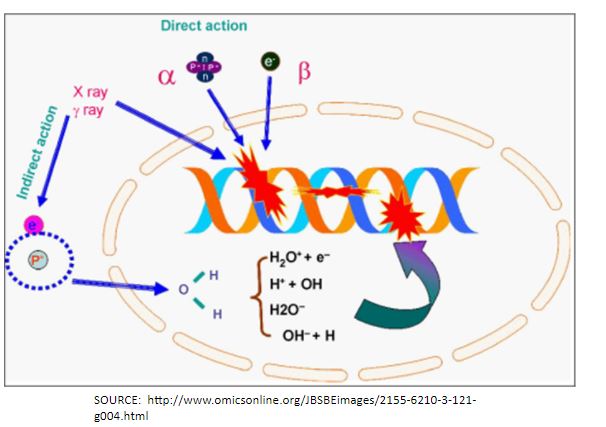
This figure shows alpha particles breaking the DNA, the Betta particle breaking the hydrogen bonds, and x-ray and gamma ray damaging bases. in fact all three types of radiation can cause direct damage. However, heavy charged particles such as alpha particle have a greater probability of causing direct damage compared to low charged particles such as X-ray which may cause most of its damage by indirect effects. Radiation leads to DNA mutations by insertions or deletions of DNA sequences, resulting in cell death, cancer and tissue toxicity.
Lung cancer from radon is probability based risk, on the chance that a cell with damaged DNA will become cancerous.
A brief exposure to elevated radon levels is not as important as long term exposure. The amount of risk depends on cumulative exposure: or radon concentration and duration of exposure to elevated levels. Lung cancer is very deadly since the survival rate is 15%. In comparison breast cancer survival rate is 88% and prostate cancer survival rate is 99%
Risk Factors:
- smoking in the home
- time spent in the home
- duration of residency
- impact on children

A report by the National Academy of Science Committee, entitled Biological Effects of Ionized Radiation (BEIR4), published that lung cancer risk increases multiplicatively with joint exposure to radon and smoking. The risks from combined exposure to radon and smoking is greater then the sum of the risk from exposure to either acting alone. As a result, EPA developed the risk chart above foe residential settings for smokers and non-smokers. In this figure, you can see that the radon risk is substantially higher in smokers then non-smokers.
Radon is classified ad a known or Class A human carcinogen based on extensive data from epidemiologic studies of underground miners and residential statues conducted worldwide. Radon is in the same class , A, as arsenic and cigarette smoking. It is a fact, radon cause lung cancer.
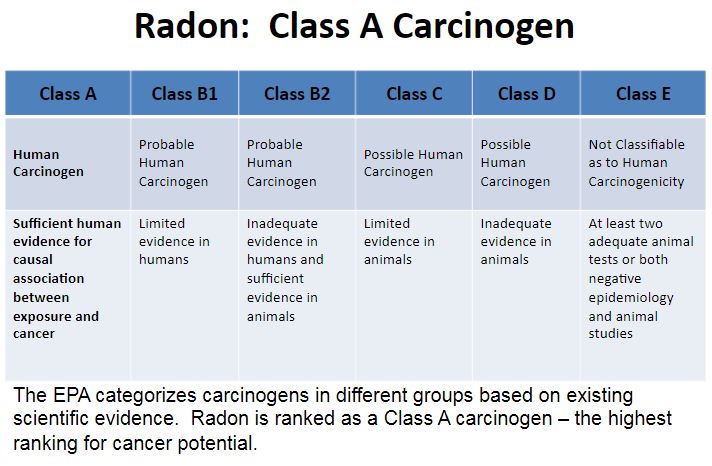
This chart compares radon induced lung cancer mortality to other health risks. the EPA estimates that radon is responsible for more deaths per year then secondhand smoke and drunk driving combined.
